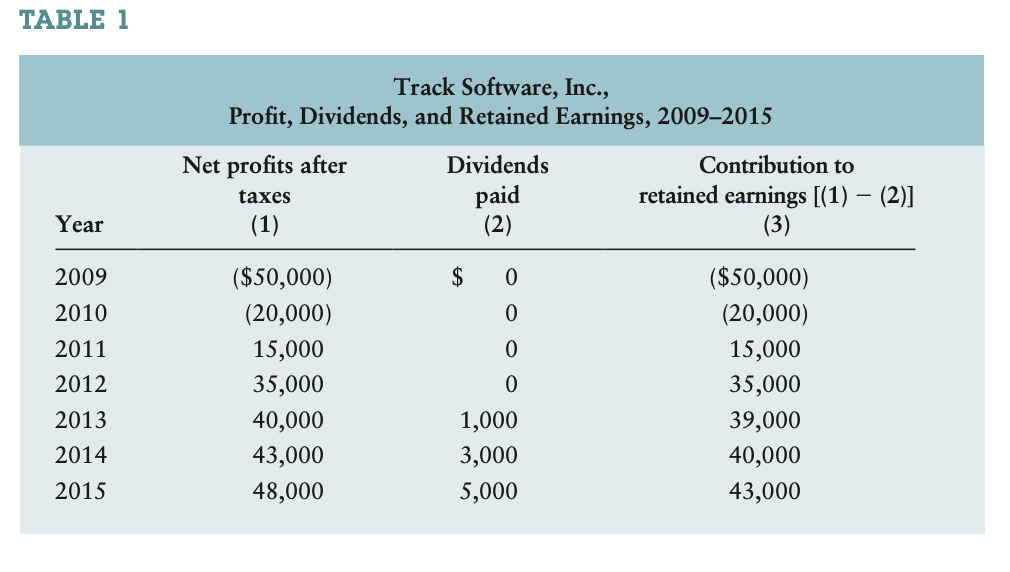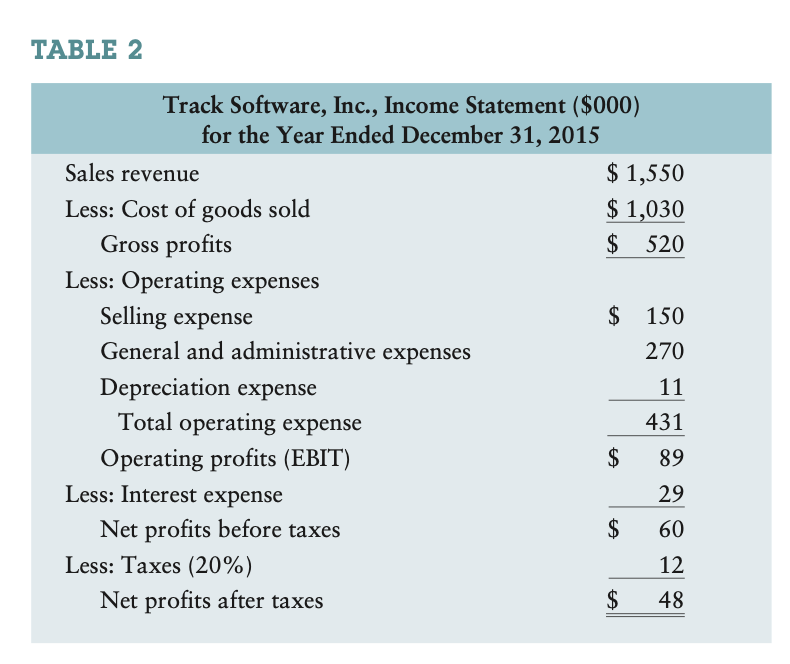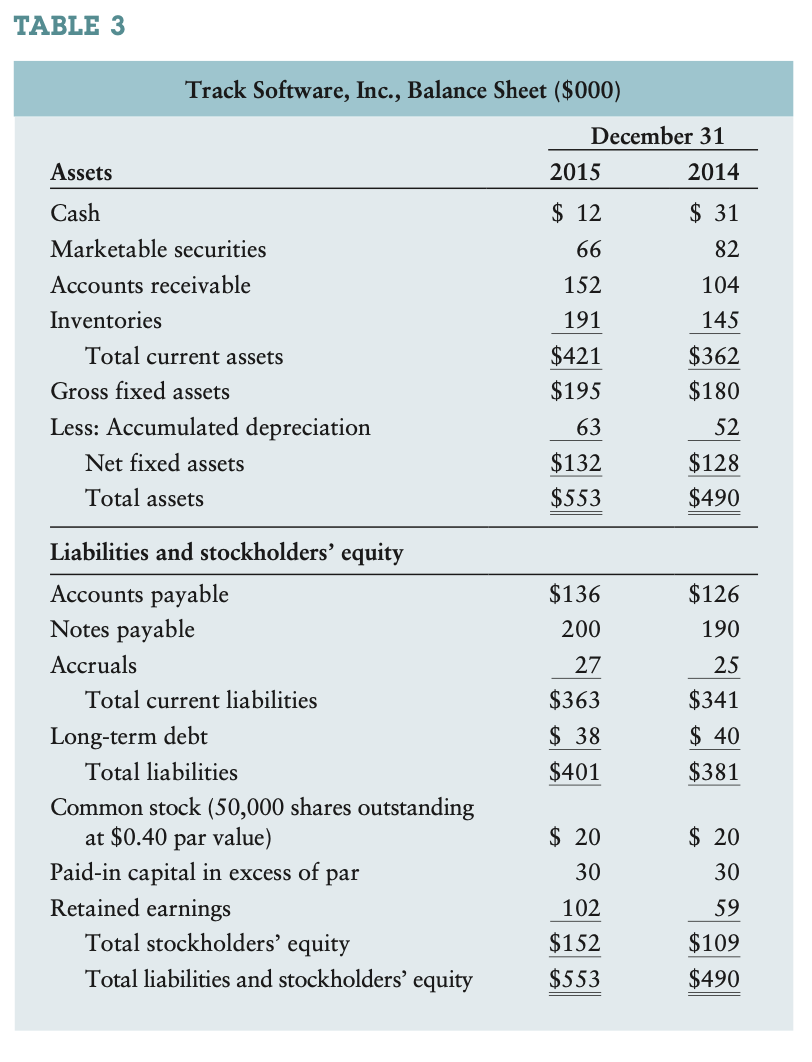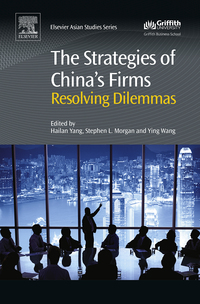Question
Track Software, Inc. Seven years ago, after 15 years in public accounting, Stanley Booker, CPA, resigned his position as manager of cost systems for Davis,
Track Software, Inc.
Seven years ago, after 15 years in public accounting, Stanley Booker, CPA, resigned his position as manager of cost systems for Davis, Cohen, and OBrien Public Accountants and started Track Software, Inc. In the 2 years preceding his departure from Davis, Cohen, and OBrien, Stanley had spent nights and weekends developing a sophisticated cost-accounting software program that became Tracks initial product offering. As the firm grew, Stanley planned to develop and expand the software product offerings, all of which would be related to streamlining the accounting processes of medium- to large-sized manufacturers.
Although Track experienced losses during its first 2 years of operation2009 and 2010its profit has increased steadily from 2011 to the present (2015). The firms profit history, including dividend payments and contributions to retained earnings, is summarized in Table 1.
Stanley started the firm with a $100,000 investment: his savings of $50,000 as equity and a $50,000 long-term loan from the bank. He had hoped to maintain his initial 100 percent ownership in the corporation, but after experiencing a $50,000 loss during the first year of operation (2009), he sold 60 percent of the stock to a group of investors to obtain needed funds. Since then, no other stock transactions have taken place. Although he owns only 40 percent of the firm, Stanley actively manages all aspects of its activities; the other stockholders are not active in management of the firm. The firms stock was valued at $4.50 per share in 2014 and at $5.28 per share in 2015. 
Stanley has just prepared the firms 2015 income statement, balance sheet, and statement of retained earnings, shown in Tables 2, 3, and 4, along with the 2014 balance sheet. In addition, he has compiled the 2014 ratio values and industry average ratio values for 2015, which are applicable to both 2014 and 2015 and are summarized in Table 5. He is quite pleased to have achieved record earnings of $48,000 in 2015, but he is concerned about the firms cash flows. Specifically, he is finding it more and more difficult to pay the firms bills in a timely manner and generate cash flows to investors, both creditors and owners. To gain insight into these cash flow problems, Stanley is planning to determine the firms 2015 operating cash flow (OCF) and free cash flow (FCF).
Stanley is further frustrated by the firms inability to afford to hire a software developer to complete development of a cost estimation package that is believed to have blockbuster sales potential. Stanley began development of this package 2 years ago, but the firms growing complexity has forced him to devote more of his time to administrative duties, thereby halting the development of this product. Stanleys reluctance to fill this position stems from his concern that the added $80,000 per year in salary and benefits for the position would certainly lower the firms earnings per share (EPS) over the next couple of years. Although the projects success is in no way guaranteed, Stanley believes that if the money were spent to hire the software developer, the firms sales and earnings would significantly rise once the 2- to 3-year development, production, and marketing process was completed.
With all these concerns in mind, Stanley set out to review the various data to develop strategies that would help ensure a bright future for Track Software. Stanley believed that as part of this process, a thorough ratio analysis of the firms 2015 results would provide important additional insights. 


 f. Track Software paid $5,000 in dividends in 2015. Suppose that an investor approached Stanley about buying 100% of his firm. If this investor believed that by owning the company he could extract $5,000 per year in cash from the company in perpetuity, what do you think the investor would be willing to pay for the firm if the required return on this investment is 10%?
f. Track Software paid $5,000 in dividends in 2015. Suppose that an investor approached Stanley about buying 100% of his firm. If this investor believed that by owning the company he could extract $5,000 per year in cash from the company in perpetuity, what do you think the investor would be willing to pay for the firm if the required return on this investment is 10%?
g. Suppose that you believed that the FCF generated by Track Software in 2015 could continue forever. You are willing to buy the company in order to receive this perpetual stream of free cash flow. What are you willing to pay if you require a 10% return on your investment? PS. I intend to use the responses in my presentation. I am hoping for comprehensive answers that can enrich the content of my presentation and provide more insight into the subject matter. Any assistance in obtaining this information would be greatly appreciated.
TABLE 1 TABLE 2 TABLE 3 TABLE 4 TABLE 5Step by Step Solution
There are 3 Steps involved in it
Step: 1

Get Instant Access to Expert-Tailored Solutions
See step-by-step solutions with expert insights and AI powered tools for academic success
Step: 2

Step: 3

Ace Your Homework with AI
Get the answers you need in no time with our AI-driven, step-by-step assistance
Get Started


